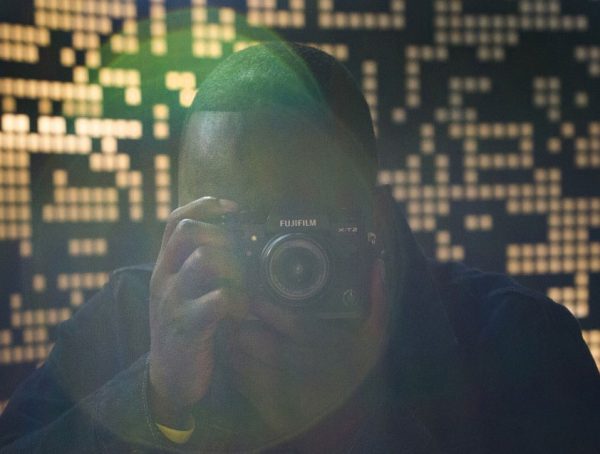Richard Tsong-Taatarii has worked at the Minneapolis Star Tribune for the past 18 years. His work covers general news, including the Black Lives Matter movement and the Rohingya refugees in Bangladesh. Of Chinese and Malaysian descent, Tsong-Taatarii immigrated to the U.S. with his family when he was 10 years old, something he feels has helped with his work because, he says, “you can identify with the ‘Other.’ ” His personal project is the “Lakota Resistance: the Bison, the Horse, and the River,” a documentary that includes coverage of the protests on Standing Rock and the Pine Ridge Reservation. He recently was interviewed by Marlee Crawford, a student at the University of Mississippi’s Meek School of Journalism & New Media,” during a conference at Guilford College in Greensboro, N.C., titled “The Journalist as Witness: Politics, Protests & Displaced Peoples.”
Q: Whose work do you admire and why?
A: I like a lot of photographers: Garry Winogrand, Eugene Richards, John Stanmeyer, Mary Ellen Mark—I try to learn from what each has to offer in terms of how they see the world.
Q: What was your biggest professional challenge and how did you overcome it? What did it teach you?
A: The biggest challenge probably has been just being more methodical in my approach—being very disciplined shooting in terms of having multiple frames, but in each frame attempting to improve it. And at the same time, still being relaxed and being friendly and open and having people be the same way toward you.
A: Does that get easier over time?
A: Yeah, it’s like when you first learn how to drive stick, you have to think about it a lot, and so how do you go from first to second back to neutral, but then you get better and then you don’t think about it and pretty soon you drive—and photography, I wouldn’t say it’s effortless—you feel not necessarily more in control, but you feel more in the moment. You feel less out of control.
Q: I remember from your presentation that eye contact is important to you…
A: Yeah, and just small talk—small talk and eye contact—and it’s just a good way to make people comfortable because then you are going into their space and you are sharing the space so you want to have a good relationship.
Q: Break that barrier?
A: Exactly, that wall.
Q: What was your biggest career mistake and what did you learn?
A: I make mistakes every day, you know, photography is mostly mistakes. If you make five to 10 good pictures a year, I mean you’re a genius, so you just keep trying every day and you improve your odds by being more devoted to your craft.
Q: What work are you most proud of?
A: I’m proud of the work I showed at this conference (Lakota Resistance: the Bison, the Horse, and the River, I am Rohingya, Not my verdict).
I’m also proud of local stories that I do. I’m working on this story on this 91-year-old bluesman. He’s still working and he’s got a great way with people and he’s got so much energy, but you know he’s had a hard life too. So, I just try to capture his spirit. I really like connecting with people who’ve learned from life and have a lot of grit. His name is Cornbread Harris and he’s funny and sweet.
Q: What advice would you give to those who feel stuck in their career or maybe are emerging journalists?
A: If you’re emerging, you’re learning. So, do as much as possible to learn. What I do after each assignment and sometimes after a situation, I reassess it in my mind and I ask myself what could have done better to make a better picture: OK, I won’t do that. That was not probably the best approach. So, I kind of log it in my head so next time, it becomes more muscle memory not to do something, but to do this and not that. So, I mean, I’m a slow learner. Over the years, that’s how I’ve improved.
Q: What are your favorite resources and how do you keep up with the media trends?
A: For a while, video was super important and now it’s important, but we’re not obsessed trying to make money off videos so much. I think we just need to be focused on good storytelling even if you just doing stills, and make those images that are going to make a difference that move people. And podcasts are making a comeback because they’re a good avenue for storytelling.
A: Did you have a favorite assignment?
A: My favorite assignment was probably a self-assignment when I began it—going to Pine Ridge and going to Standing Rock. I assigned myself to do it, took vacation time and it turned into this exhibit and kind of helped me find my voice as a photographer, so I encourage young photographers to do a personal project, because you can find your own voice and figure out what you want to say to the world.








